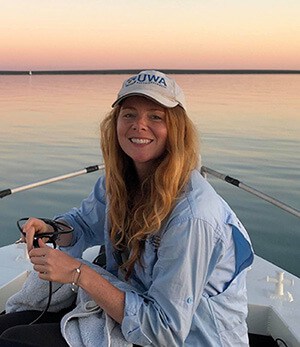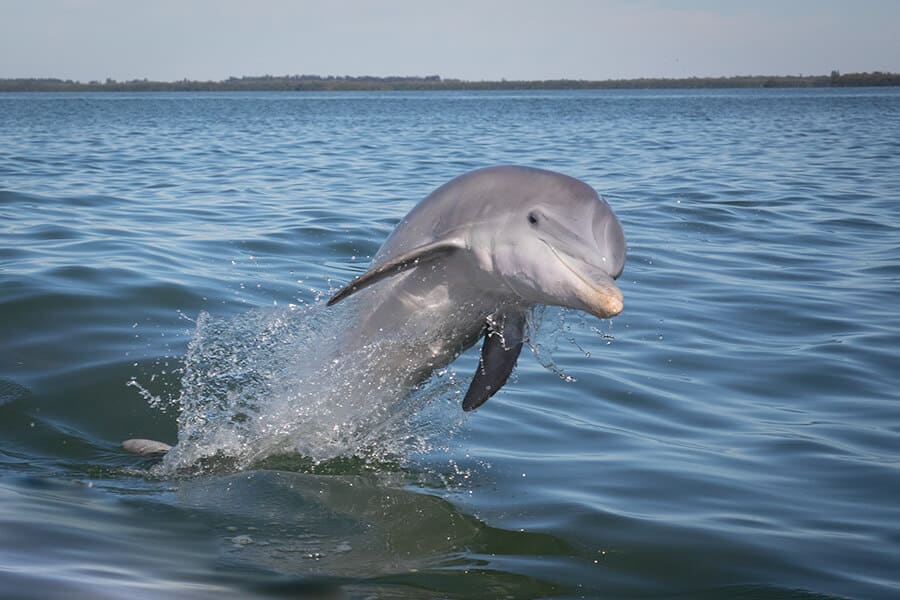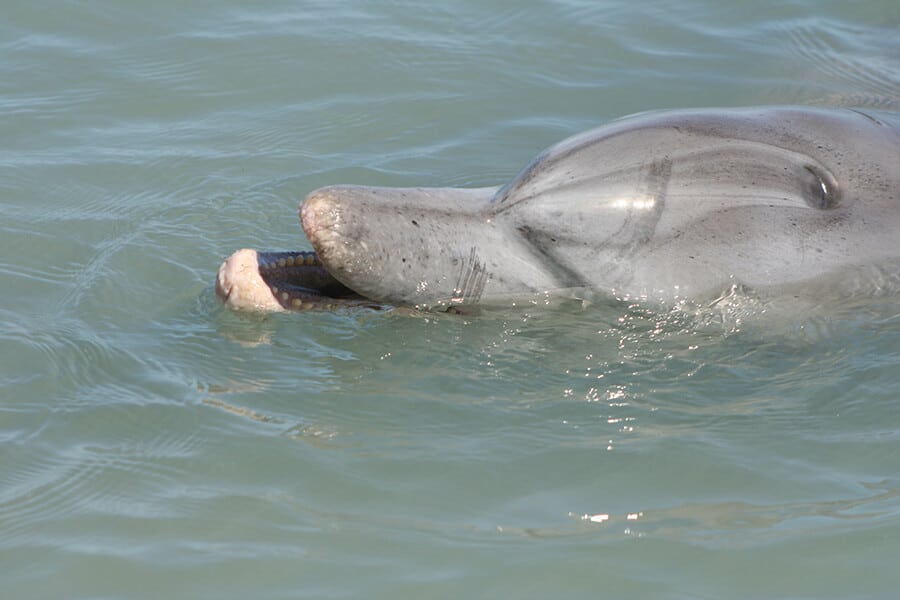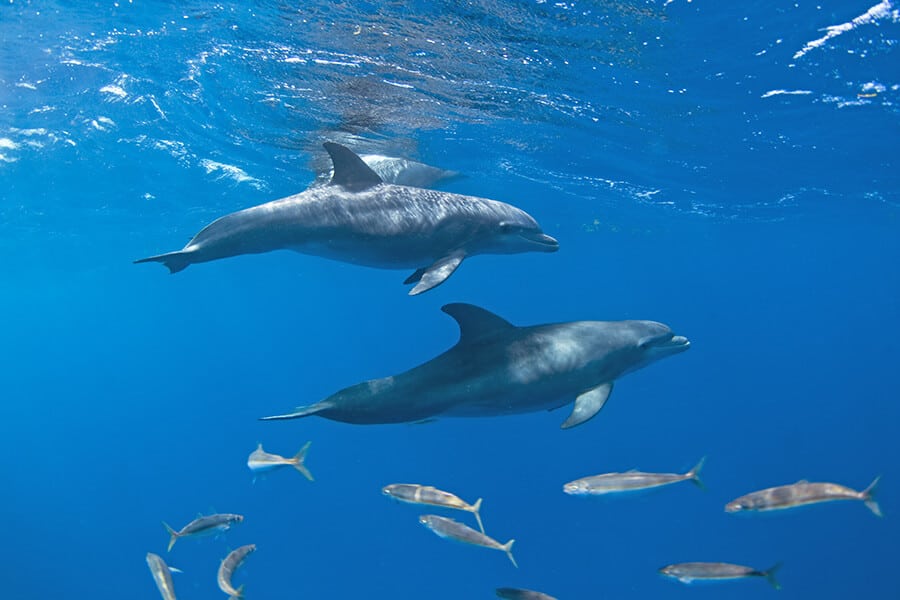Dr. Stephanie King is a renowned behavioral biologist. She focuses on animal communication systems and how these systems have evolved to facilitate complex social behaviors. Much of her research is focused on acoustic communication and social cognition in bottlenose dolphins. She has over fifteen years of experience in these areas and more. We have this opportunity for an interview with her.
Dr. King, your research areas are most unusual and extremely interesting. Do tell us about your journey and motivation in this highly specialized field.

Growing up I was always fascinated by the behaviour of social animals, from prides of lions to chimpanzee communities, I wanted to know how individuals shared information with one another and maintained their social relationships. However, I was particularly interested in toothed whales (which includes dolphins), because many species form complex social groups and have to maintain these relationships in an underwater environment where vision is restricted (light does not travel far underwater) and sound is the primary way that they communicate with each other.
This fascination led me to undertake my Masters and PhD on dolphin communication at the world-renowned Sea Mammal Research Unit at the University of St Andrews, UK, which is where my career began.
When one talks about dolphins, a lay person usually imagines a bottlenose dolphin please tell us about this species as a whole.
Bottlenose dolphins are found worldwide, from the tropical waters of northern Australia to the northern Atlantic. They are a highly social species with group sizes varying from just a few to about 30 individuals, and groups of several hundred are observed on occasions. Individuals can live to over 40 years old, and females have one calf at a time that stay with the mother for 3-4 years before weaning.
Please tell us about the communication among them.
Bottlenose dolphins are well known for their use of individually distinctive identity signals termed ‘signature whistles’.
Bottlenose dolphin communication has been extensively studied; they use sonar (echolocation clicks) to navigate their environment and find food, and they use whistles for social communication. Bottlenose dolphins are well known for their use of individually distinctive identity signals termed ‘signature whistles’. Each dolphin develops its own signature whistle in its first year of life that it uses to broadcast its identity, somewhat comparable to a human name.

Which are the special aspects of their social behavior?
Bottlenose dolphins typically live in open social networks characterised by a fission-fusion grouping pattern – this means that all individuals within a population can associate with one another, similar too many human societies. Bottlenose dolphins are well known for their culturally transmitted foraging specializations and their long-lasting cooperative alliances.
How do they cooperate when working together and what is the work they do?
In Shark Bay, unrelated males work together in alliances to herd single females and defend them from rival alliances. These alliance relationships can last for decades, and are critical to each male’s reproductive success, in order to sire calves, they need to work together to get access to females. Males in these alliances maintain and strengthen their social bonds by petting one another, which is similar to grooming in primates.
How do females differ from males in their behavioral tendencies?
Females do not form alliances but do engage in a variety of innovative foraging specialisations. In Shark Bay dolphins use marine sponges as a tool to access a novel foraging niche – they use the marine sponge to protect their rostrum as they probe the sea floor looking for swim bladderless, spiny fish. Using the sponge gives them access to prey they wouldn’t have access to without the sponge. This behaviour, known as ‘sponging’, is an example of vertical cultural transmission where calves learn the behaviour from their mothers and it is very female biased – female offspring are more likely to learn the behaviour from their mother than male offspring.
Do these playful beings actually commit suicide as one reads?
I think you are referring to stranding events, where whales and dolphins strand themselves on beaches, sometimes in large groups, and unfortunately this can result in death. This can happen for a number of reasons, usually it’s a result of an individual being very sick but sometimes whales and dolphins can become disorientated from human noise disturbance (i.e. military sonar or oil and gas exploration) and this causes them to strand on beaches, which typically results in death.
What is their relationship with humans?
Dolphins are an iconic species in many countries and cultures and we tend to be intrinsically interested in dolphin behaviour. We hope that our research into dolphin behaviour can help protect populations from human disturbance and threats.
Does the military in some countries actually use them for militaristic purposes?
Yes, for example, the US Navy has a long-running training program with bottlenose dolphins, where animals are taught to help retrieve equipment and detect mines.
A fair amount of your efforts have been dedicated to Shark Bay Dolphins. Why especially this?
The Shark Bay dolphins are one of the best-studied marine mammal populations worldwide and have been studied extensively since 1982. As a result, we have a rich social history of each individual, we know who is related to who and which individuals prefer to associate together. The Shark Bay dolphin population exhibits a complex structure of nested alliance formation, as well as culturally transmitted tool use, providing striking parallels in social complexity and behavioural richness to some human societies.

Do dolphins get depressed?
That is a very anthropomorphic term, and it’s not something we can definitively answer.
What are broadly the different motivations of students when they choose to study with you?
Students that come to work with me are very passionate about pursuing a career in science and answering questions that can help us better understand and protect marine mammal species.
Which parts of the world does your work take you to?
I have spent time studying marine mammals all over the world including the UK, USA, South Africa and Australia but now my research mainly takes place in Shark Bay, Western Australia and Cardigan Bay, Wales.
And which parts of the world does pleasure take you to?
I spend all my spare time in Australia because it’s such an incredible place in terms of wildlife and scenery.
Is your work a pleasure? One would imagine so.
I feel very lucky because it never feels like work, I love my job and I get to work with an amazing population of animals.
Are you a deep sea diver as well?
Yes, I am a qualified scuba diver but we won’t dive with the dolphins, we don’t want to disturb their normal behaviour so we observe them carefully from boats.
Our readers are mostly the youth from different parts of the world who look up to achievers such as yourself for inspiration. A word of advice for them?
Never give up on your dreams or aspirations.
Never give up on your dreams or aspirations. I have had to put up with a lot of rejection during my career but determination and perseverance kept me going and eventually that paid off. Also, be nice to each other and to animals.
Photos: From the Archive of Dr. Stephanie King, Shutterstock, Martina Advaney
Read more here.
Support us!
All your donations will be used to pay the magazine’s journalists and to support the ongoing costs of maintaining the site.
Share this post
Interested in co-operating with us?
We are open to co-operation from writers and businesses alike. You can reach us on our email at [email protected]/[email protected] and we will get back to you as quick as we can.









